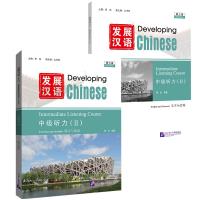Online Bookstore
Developing Chinese (3rd Edition) Intermediate Listening Course (Ⅱ)
Author:Li Quan
- Medium:Books
- ISBN: 9787561967782
- Page Count: 159
- Size:
- The book weight: 711 g
- Annotation Language:English
- Course:Listening
- Target Audience(Age):College ,Adults
- Target Audience(Language):Pre-Intermediate,Intermediate
- The Series: Developing Chinese (3rd Edition)
- Subject Zone: Developing Chinese (3rd Edition)
- Price:
-
Category: Textbooks >Study in China >Short-Term
Textbooks >Study in China >Long-Term
More














